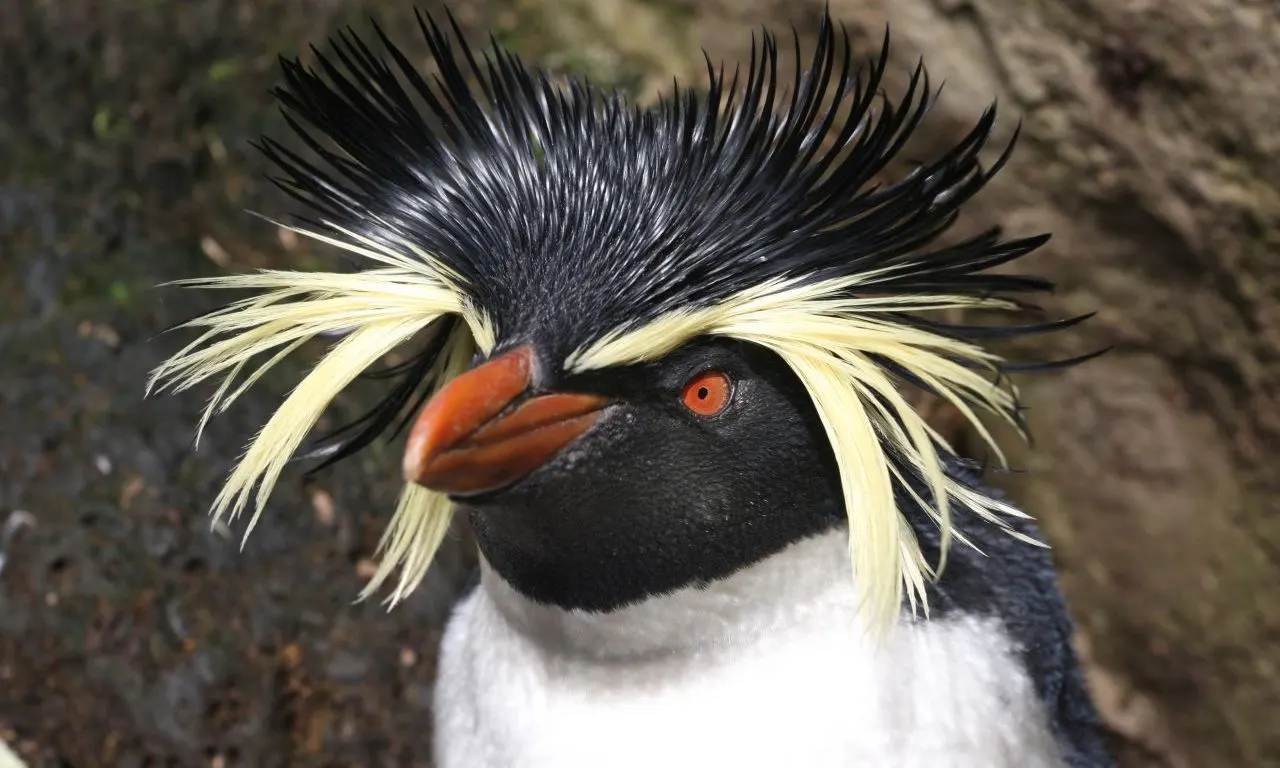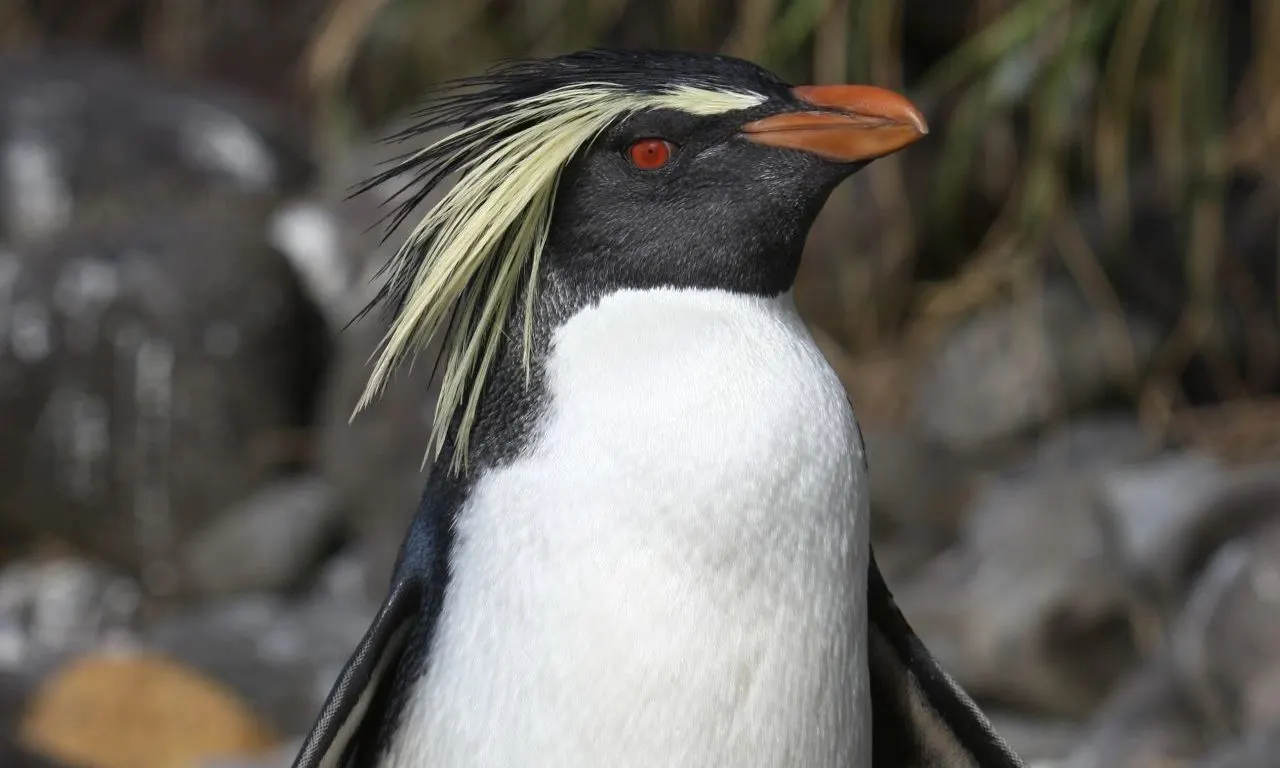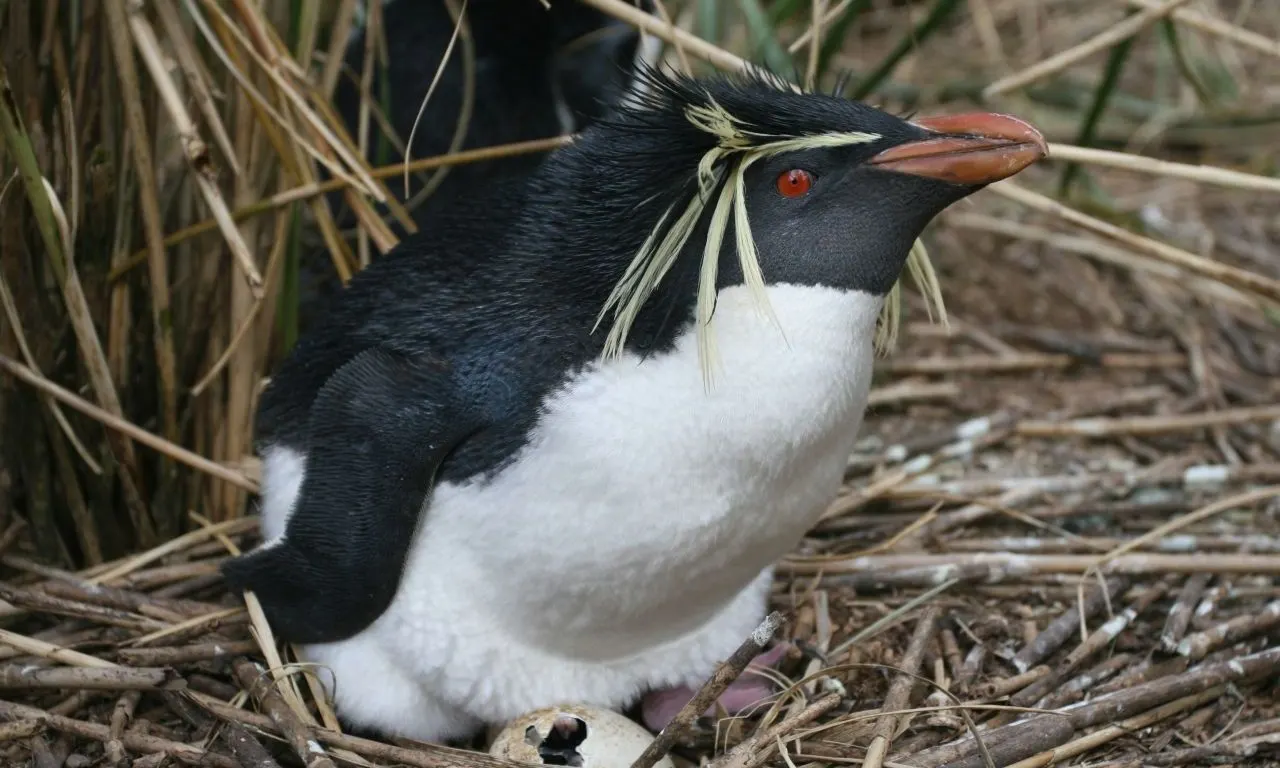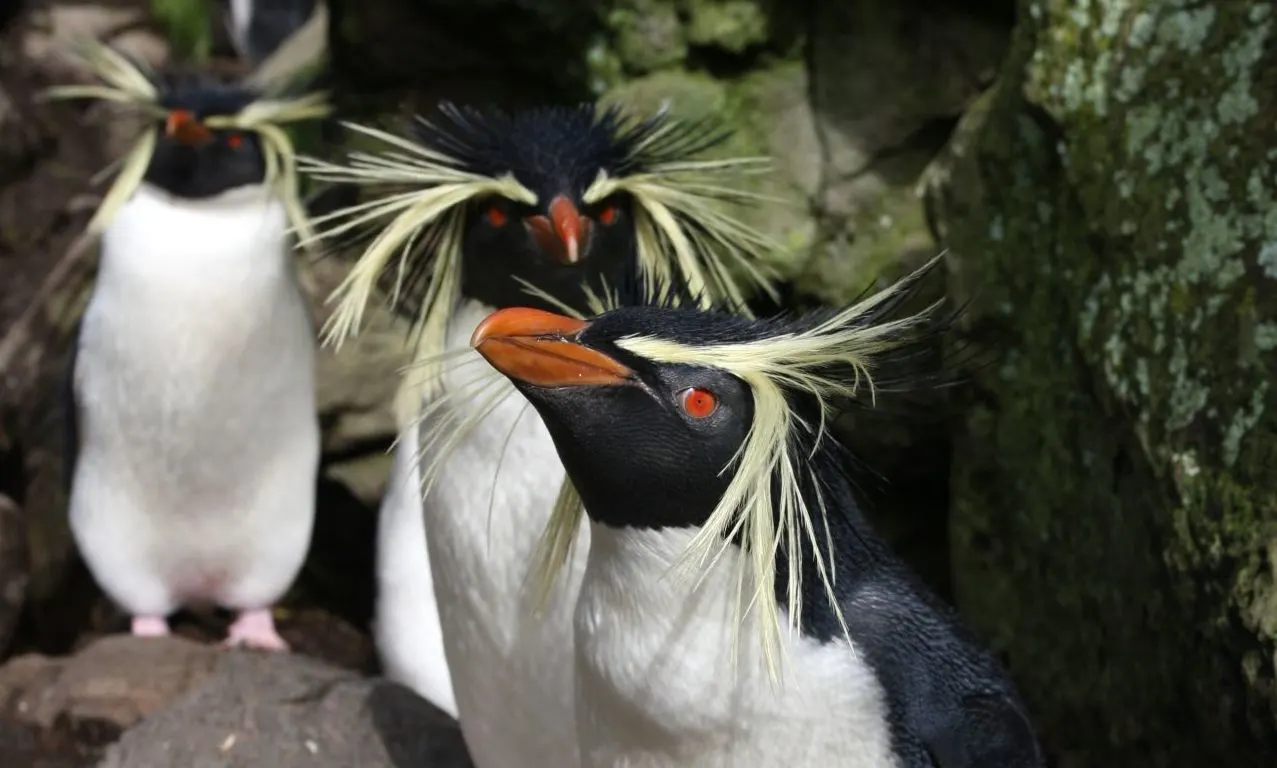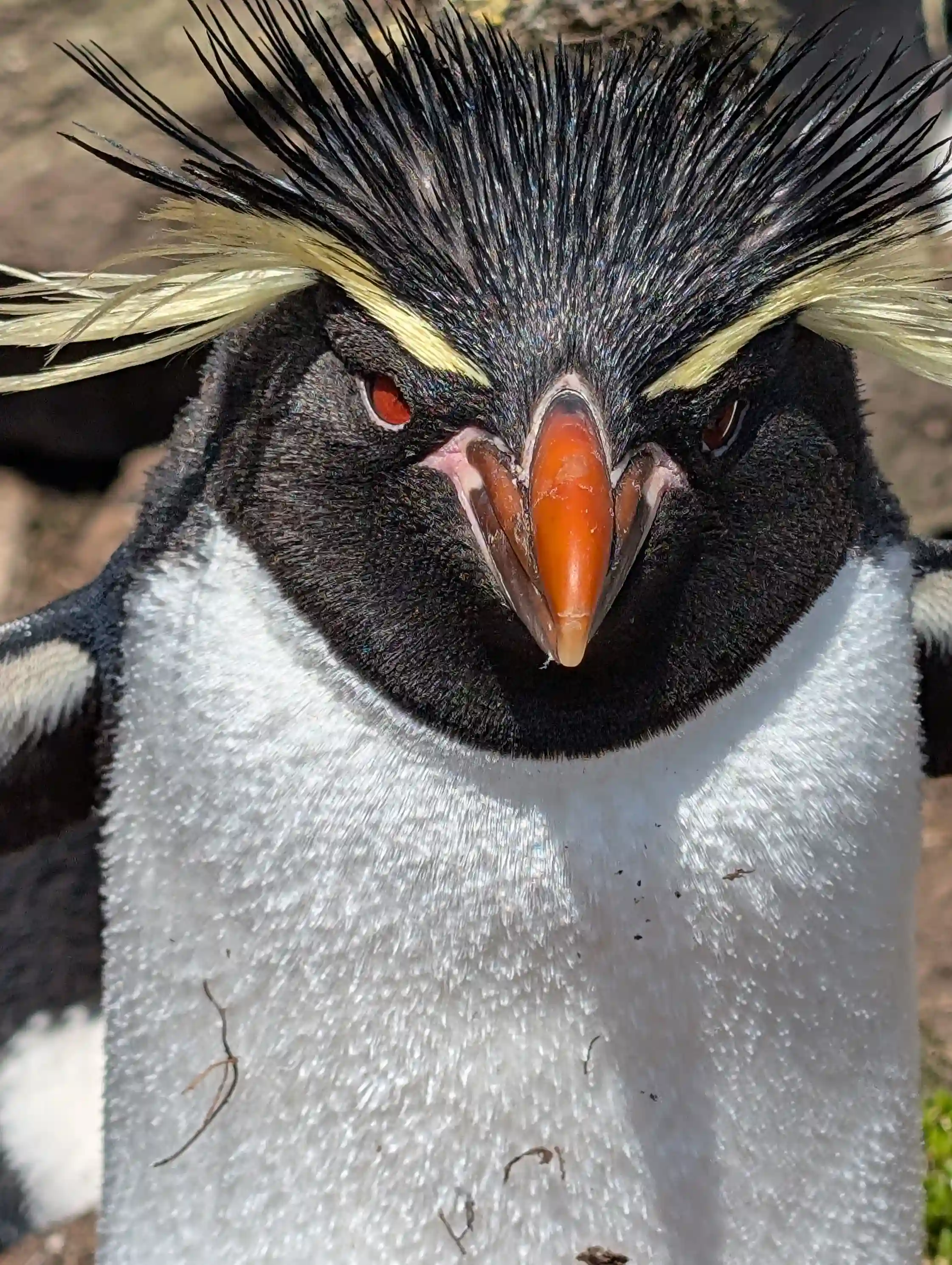Northern Rockhopper Penguin - Eudyptes moseleyi
- DESCRIPTION
- 42-45 cm tall, 3 kg at the start of the breeding season. Black plumage on the head and dorsal surface, white chest and belly. Bright red eye colour, orange-red bill (thicker and heavier in males) and long yellow head plumes. Black flippers with a white edge on the dorsal side, white underside. Stiff tail feathers and large pink feet with black/grey claws. Immature birds are less brilliantly plumaged, with dark-grey feathers on their dorsal surface and a duller-red eye and bill colour.
- DISTRIBUTION
-
Tristan da Cunha islands and Gough Island in the central South Atlantic Ocean
and at Amsterdam and St Paul Islands in the Indian Ocean. Migratory after
breeding and moulting.
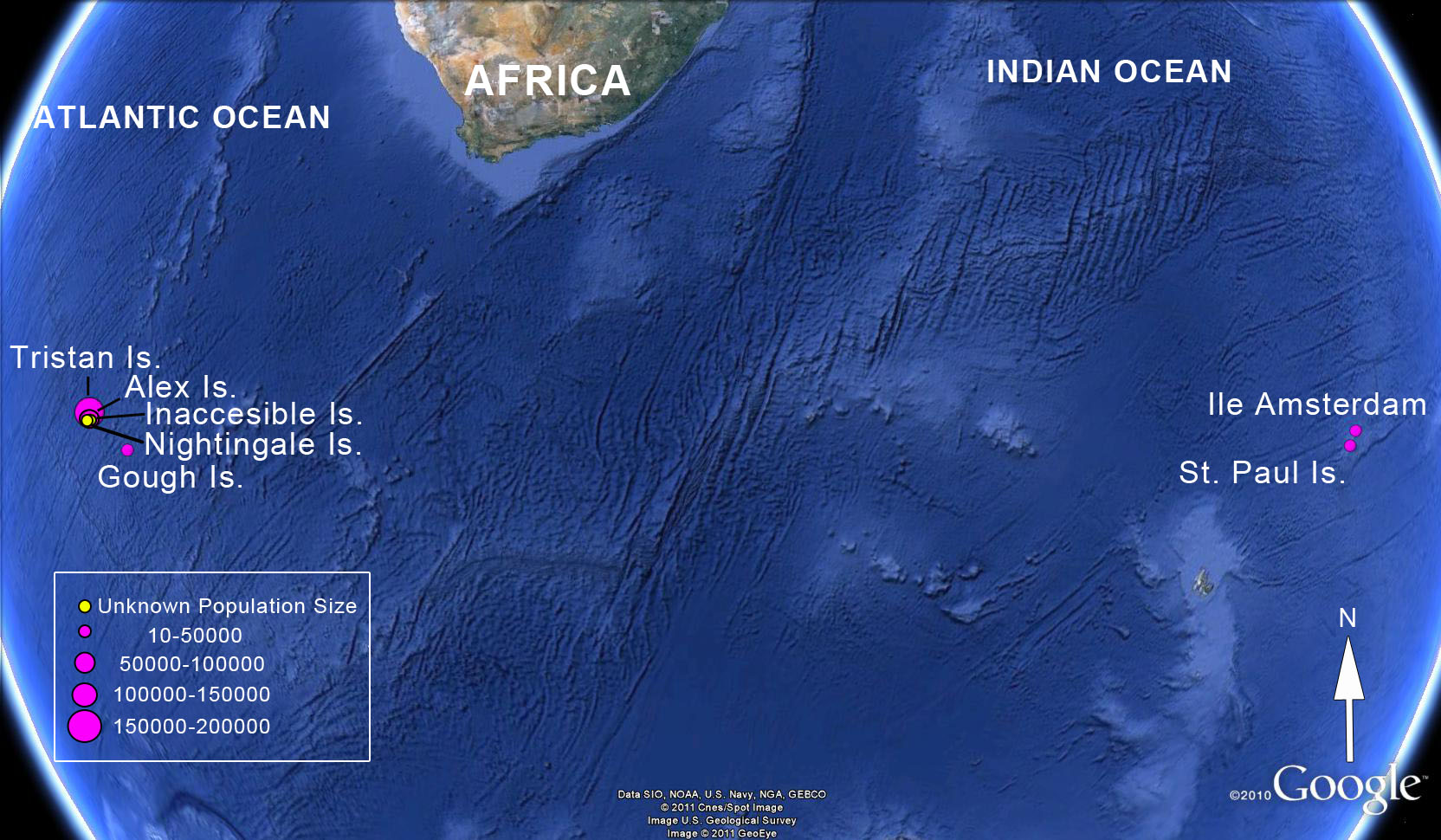
- HABITAT
- Marine. They nests in a variety of habitats, ranging from open boulder beaches at Gough Island to underneath dense and high stands of tussock grass on Nightingale and Inaccessible islands. A small nest, sometimes in small caves and amongst crevices, is built from tussock, sticks, feather and pebbles.
- BREEDING BIOLOGY
- Adults arrive in late July and August and immediately pair up. Two white eggs are laid, incubation shared by male and female during 32-34 days. On hatching the chick is brooded by the male for a further 20-26 days with all foraging undertaken by females. After this period, chicks gather in to crèches and with both parents feeding the chick. Feeding continues until chicks have moulted out of their downy plumage and depart to sea approximately nine to ten weeks after hatching.
- FEEDING
- crustaceans, mainly euphausids, make up the bulk (90%) of prey items. The remaining prey items consisted of fish and a very few cephalopods.
- REPRODUCTIVE POPULATION
- 190,000/230,000 pairs
- Conservation status (IUCN) and threats
- “Endangered” (IUCN Red List 2018), based upon the recent split of this species from the other more abundant southern forms of Rockhopper penguin and the rapid population decreases observed over the last 30 years (declines in excess of 50% over three generations). Major threats are climate variation, egg collection, competition and incidental capture in fisheries, habitat degradation.
- SOURCE
- Cuthbert, R. J. 2013. Northern Rockhopper Penguin (Eudyptes moseleyi). In PENGUINS: NATURAL HISTORY AND CONSERVATION (García Borboroglu, P.G. and Boersma, P.D. eds.) UW Press, Seattle U.S.A. 328 pp.
